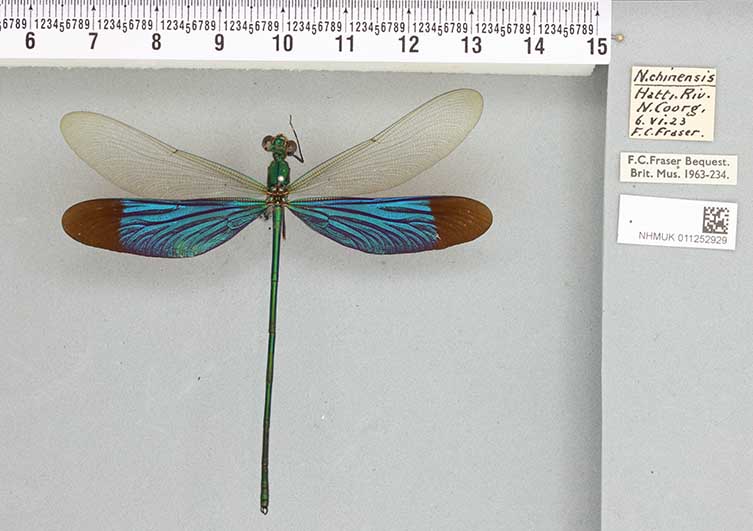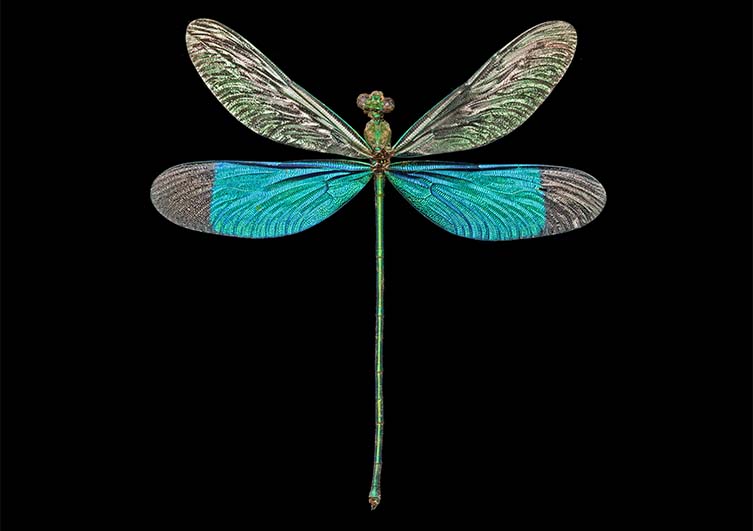Create a list of articles to read later. You will be able to access your list from any article in Discover.
You don't have any saved articles.

More than 20,000 plant specimens held at the Museum will be digitally copied.
Museum experts are collaborating with the Botanical Survey of India (BSI) in Kolkata to make the plant collections available for research.
The plants were collected in India over three centuries. They will soon be made available for use in research projects across the world, helping experts to understand more about Indian biodiversity.
Three scientists from the BSI will work with digitisation and herbarium experts in London, beginning with an important collection of crop and medicine plants.
They can then train other researchers and lay the groundwork for future research collaborations.
Both organisations have also committed to increasing scientific collaborations such as assessing changes to plant life and wider ecosystems, and providing evidence for conservation and environmental protection.

Curator Ranee Prakash in the Museum herbarium, where the BSI scientists will work
Dr Sandra Knapp, Head of Algae, Fungi and Plants at the Museum, says, 'We are excited to have our colleagues from BSI coming the Museum to begin digitising our rich collections of Indian plants.
'With this information, and the new skills they will gain while here, we can together begin to understand patterns of plant diversity in India that will ultimately feed into sustainable development that works with nature rather than against it.'
The history of botanical research in India dates back millennia, with plants being used in medicine and local culture.
The rich collections of Indian plants held in UK institutions, gathered by botanists in the eighteenth, nineteenth and twentieth centuries, are an invaluable resource for modern Indian botanical science.

Tea plantations in India that Dr Knapp visited during previous work in the country © Dr Sandy Knapp
Data from the collections will provide baseline knowledge which can be used by scientists to understand more about biodiversity patterns and loss, and about how plants change with time and in the face of environmental change.
It will also be vital for providing an evidence base for responsible conservation and environmental protection.
Plants are a major component of health systems in India. Knowledge about their diversity and distribution, especially in the face of climate change, will benefit the health of rural communities.
Dr Knapp adds, 'Plants are the basis for ecosystems and for much of the economy, whether through food production or medicines for human health. Understanding their distribution and history is an important starting point for the future work we will do with our partners at BSI.'

An Indian dragonfly specimen, Neurobasis chinensis, being prepared for digitisation

The digital file of Neurobasis chinensis
The Museum's collection of 80 million specimens is one of the world's greatest repositories of information about our planet. Staff at the Museum are gradually making digital copies of these specimens using some of the latest innovations in imaging and computer science.
Specimen data is released openly through the Museum's Data Portal. This window on the collection gives the global scientific community unprecedented access to specimens and research data.
Over the past two years the Data Portal has seen more than 100,000 downloads, representing five billion Museum records.
The Museum's digital reference collections are already supporting programmes of research in data-rich biodiversity, health and conservation science. For example, the Indian dragonfly specimens (pictured above) being digitised are critical indicators of water quality.

Digitisation equipment in use at the Museum
Money for the Indian plant project is from the Ernest Rutherford Fund, a £118-million government fund providing fellowships for researchers from across the globe.
The scheme was revealed in July 2017 by Jo Johnson, the UK's Minister of State for Universities, Science, Research and Innovation.
He announced details of awarded projects at an event at the National Science Centre in New Delhi, India, on 1 November.
Other Museum projects are also receiving backing from the Rutherford Fund. They include: